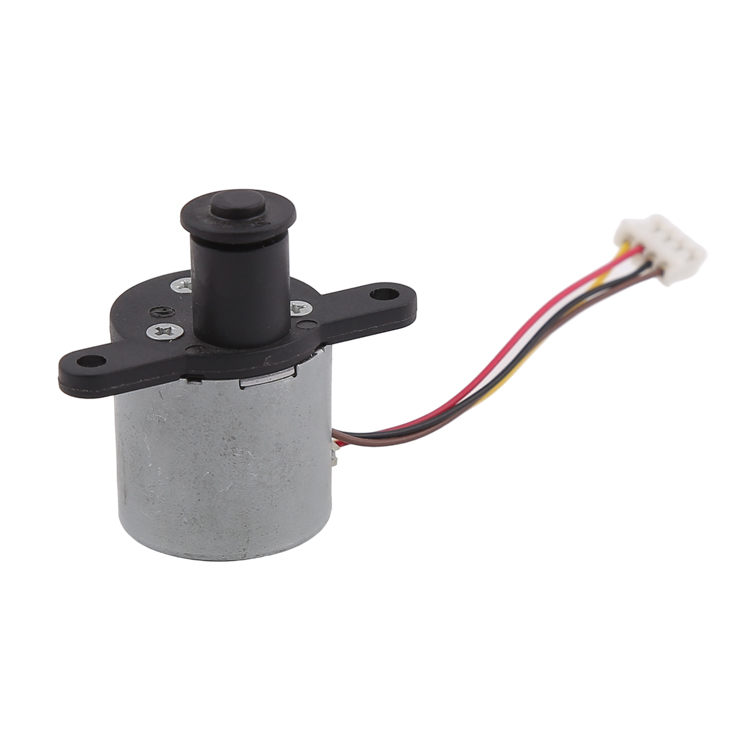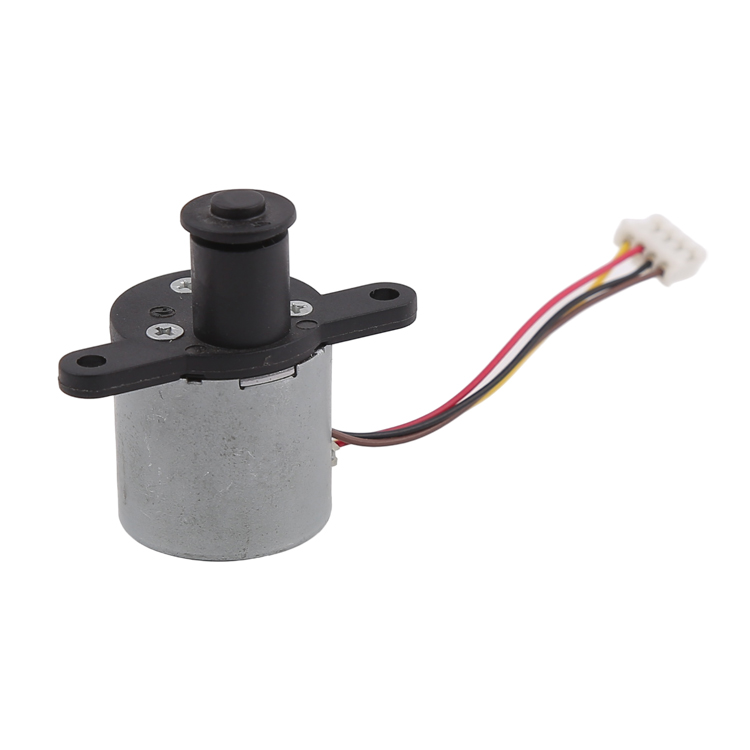Intelligent thermostat, as an indispensable part of modern home and industrial automation, its precise temperature control function is of great significance to improve the quality of life and production efficiency. As the core driving component of the intelligent thermostat, the working principle and application in the thermostat of 25mm push head stepping motor is worth exploring.
First, the basic working principle of 25 mm push head stepper motor
Stepping motor is an open-loop control element that converts an electrical pulse signal into an angular displacement or line displacement. In the case of non-overload, the motor speed, stopping position depends only on the frequency of the pulse signal and the number of pulses, and is not affected by changes in the load, that is, add a pulse signal to the motor, the motor is turned over a step angle. The existence of this linear relationship, coupled with the characteristics of the stepper motor only periodic error without cumulative error, makes the control of speed, position and other control areas with stepper motors become very simple.
The 25 mm push head stepping motor, as its name implies, has a push head diameter of 25 mm, which provides a smaller size and higher accuracy. The motor achieves precise angular or linear displacements by receiving pulse signals from the controller. Each pulse signal turns the motor by a fixed angle, the step angle. By controlling the frequency and number of pulse signals, the speed and position of the motor can be precisely controlled.
Second, the application of 25 mm push head stepping motor in intelligent thermostat
In intelligent temperature controllers, 25 mm push-head stepping motors are mainly used to drive actuators, such as valves, baffles, etc., to achieve precise control of temperature. The specific working process is as follows:
Temperature sensing and signal transmission
The smart thermostat first senses the room temperature in real time through temperature sensors and converts the temperature data into electrical signals. These electrical signals are then transmitted to the controller, which compares the preset temperature value with the current temperature value and calculates the temperature difference to be adjusted.
Generation and transmission of pulse signals
The controller generates the corresponding pulse signals based on the temperature difference and transmits them via the drive circuit to the 25 mm push head stepper motor. The frequency and number of pulse signals determine the speed and displacement of the motor, which in turn determines the size of the actuator opening.
Actuator action and thermoregulation
After receiving the pulse signal, the 25 mm push-head stepper motor starts to rotate and pushes the actuator (e.g. valve) to adjust the opening accordingly. When the opening of the actuator increases, more heat or cold enters the room, thus raising or lowering the indoor temperature; conversely, when the opening of the actuator decreases, less heat or cold enters the room, and the indoor temperature gradually converges to the set value.
Feedback and closed-loop control
During the adjustment process, the temperature sensor continuously monitors the indoor temperature and feeds the real-time temperature data back to the controller. The controller continuously adjusts the pulse signal output according to the feedback data to achieve precise temperature control. This closed-loop control allows the intelligent temperature controller to automatically adjust the opening of the actuator according to changes in the actual environmental conditions, ensuring that the indoor temperature is always maintained within the set range.
Third, the advantages of 25 mm push head stepping motor and its advantages in the intelligent temperature controller
High-precision control
Due to the precise angular and linear displacement characteristics of the stepper motor, the 25 mm push head stepper motor can achieve precise control of the actuator opening. This enables the intelligent thermostat to achieve precise adjustment of temperature, improving the accuracy and stability of temperature control.
Fast Response
The high rotational speed and acceleration of the stepper motor enables the 25 mm push-head stepper motor to respond quickly after receiving a pulse signal and quickly adjust the actuator opening. This helps the smart thermostat reach the set temperature in a short time and improves the efficiency of temperature control.
Energy saving and environmental protection
By accurately controlling the opening of the actuator, the Smart Thermostat is able to avoid unnecessary energy wastage and realise energy saving and environmental protection. At the same time, the 25 mm actuator stepper motor itself has a high energy efficiency ratio, which also helps to reduce energy consumption.
IV. Conclusion
In summary, the application of 25 mm push-head stepper motors in smart thermostats achieves precise, fast and energy-saving control of temperature. With the continuous development of smart home and industrial automation, 25 mm push-head stepper motors will play an important role in more fields and promote the continuous progress of temperature control technology.
Post time: Apr-10-2024


